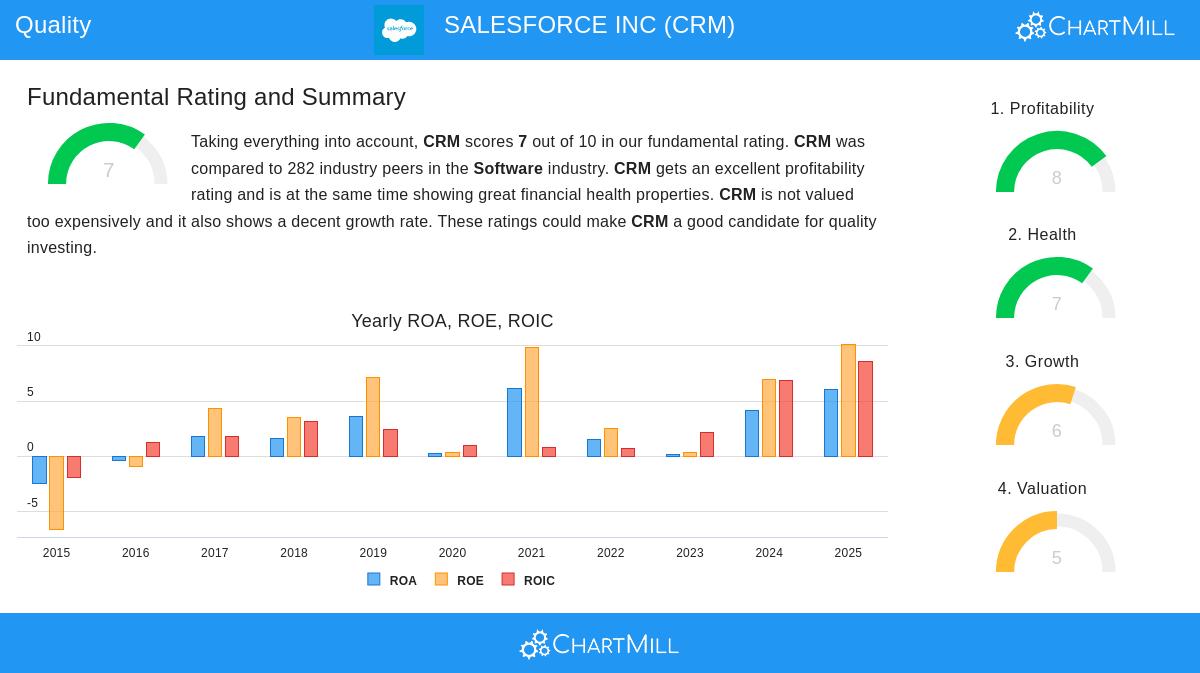SALESFORCE INC (NYSE:CRM) – A Strong Contender for Quality Investors
By Mill Chart
Last update: Jul 23, 2025
SALESFORCE INC (NYSE:CRM) stands out as a compelling candidate for quality investors, meeting key criteria for long-term growth, profitability, and financial health. The company’s strong fundamentals and consistent performance make it a noteworthy pick in the software industry. Below, we examine why CRM aligns with the principles of quality investing.

Key Strengths of SALESFORCE INC
- Revenue and EBIT Growth: CRM has demonstrated solid revenue growth, with a 5-year CAGR of 9.62%. More importantly, EBIT growth over the same period surged at 75.31%, indicating improving operational efficiency and profitability.
- High ROIC: The company’s Return on Invested Capital (excluding cash and goodwill) is an impressive 390.16%, reflecting exceptional capital allocation and operational effectiveness.
- Strong Profit Quality: With a 5-year average Profit Quality (Free Cash Flow to Net Income) of 786.34%, CRM converts a significant portion of earnings into cash, a hallmark of financial stability.
- Low Debt Burden: The Debt-to-Free Cash Flow ratio stands at a healthy 0.67, meaning CRM could theoretically repay its debt in less than a year using its current cash flow.
- Valuation: While CRM trades at a P/E of 25.52, it remains cheaper than 75% of its industry peers, suggesting reasonable valuation relative to growth prospects.
Fundamental Analysis Summary
Our fundamental report assigns CRM a score of 7 out of 10, highlighting strengths in profitability and financial health. Key takeaways include:
- Profitability: High operating margins (20.50%) and improving profit margins (16.08%) place CRM ahead of most competitors.
- Financial Health: A low debt-to-equity ratio (0.14) and strong Altman-Z score (4.91) indicate a stable balance sheet.
- Growth Outlook: Analysts expect revenue to grow at 9.62% annually over the next three years, supporting continued expansion.
For investors seeking high-quality companies with durable competitive advantages, CRM presents a strong case.
Our Caviar Cruise screener lists more quality stocks and is updated daily.
Disclaimer
This is not investing advice! The article highlights observations at the time of writing, but you should always conduct your own analysis before making investment decisions.
NYSE:CRM (12/9/2025, 11:29:08 AM)
261.15
+1.62 (+0.62%)
Find more stocks in the Stock Screener
CRM Latest News and Analysis








